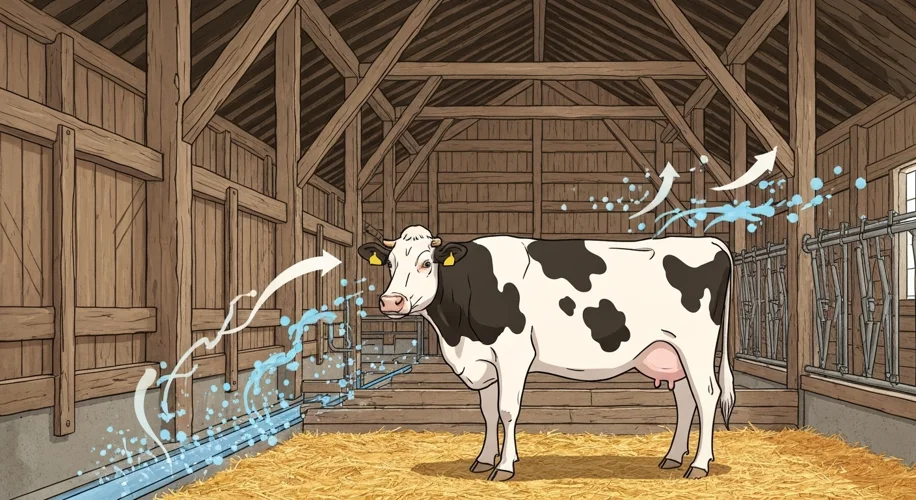It feels like we’re constantly learning new things about how viruses spread, and the recent developments with H5N1, also known as avian influenza, on dairy farms are no exception. We often think of viruses spreading through direct contact, like an animal touching another, or through droplets from coughs and sneezes. But what if there are other, less obvious pathways at play?
Did you know that scientists are now investigating whether air and wastewater could be playing roles in the transmission of H5N1 on dairy farms? This is a significant shift in how we understand the virus’s movement within these environments.
The Usual Suspects vs. New Possibilities
Traditionally, H5N1 in poultry has been understood to spread through direct contact with infected birds or their contaminated environments (like feces or secretions). When it comes to dairy cows, initial transmission was likely from birds to cattle, perhaps through contact with contaminated feed or water. However, the widespread nature of the outbreak across multiple farms in different locations, sometimes with no clear direct link to wild birds, has prompted a closer look at other routes.
Airborne Transmission: More Than Just Close Contact
Think about how dust travels. If an infected cow sheds the virus, it’s possible that viral particles could become aerosolized, meaning they could become suspended in the air. My background in atmospheric science makes me think about how particles move and disperse. Factors like ventilation in barns, the density of animals, and even farm activities could influence how far and how long these viral particles might remain airborne. While we often associate airborne transmission with respiratory viruses we get, the idea that H5N1 could take to the air on a farm opens up a new understanding of potential spread, especially in enclosed or semi-enclosed spaces like barns.
Wastewater: A Surprising Contributor?
And then there’s wastewater. On a farm, ‘wastewater’ can refer to a lot of things – from manure lagoons to general farm runoff. If infected animals are shedding the virus in their waste, this material can enter wastewater systems. Wastewater, especially in large quantities from a farm, can create environments where viruses might persist. The movement of this wastewater, whether through natural runoff or through management practices, could potentially carry the virus to new areas or expose other animals. It’s a less intuitive thought, but it’s a crucial area of research when trying to get a handle on how diseases spread within a population.
Why This Matters
Understanding these potential transmission routes is not just an academic exercise. For dairy farmers, it means rethinking biosecurity measures. For public health officials, it means developing more comprehensive strategies to monitor and control outbreaks. As someone who studies environmental factors and disease, I see this as a reminder that pathogens can be incredibly adaptable, and their spread is often influenced by the environments we create and manage.
This research into air and wastewater transmission highlights the dynamic nature of infectious diseases and the importance of looking beyond the obvious pathways to truly understand and combat them. It’s a complex puzzle, and scientists are working diligently to piece it together.

